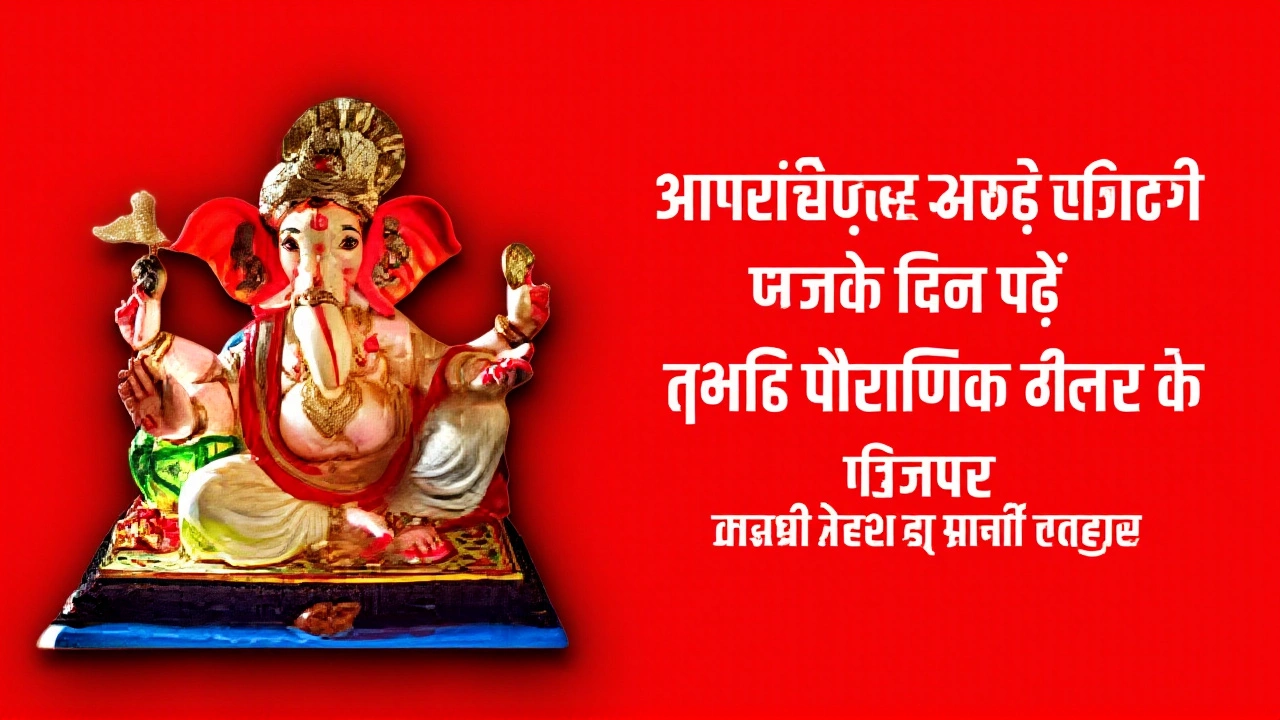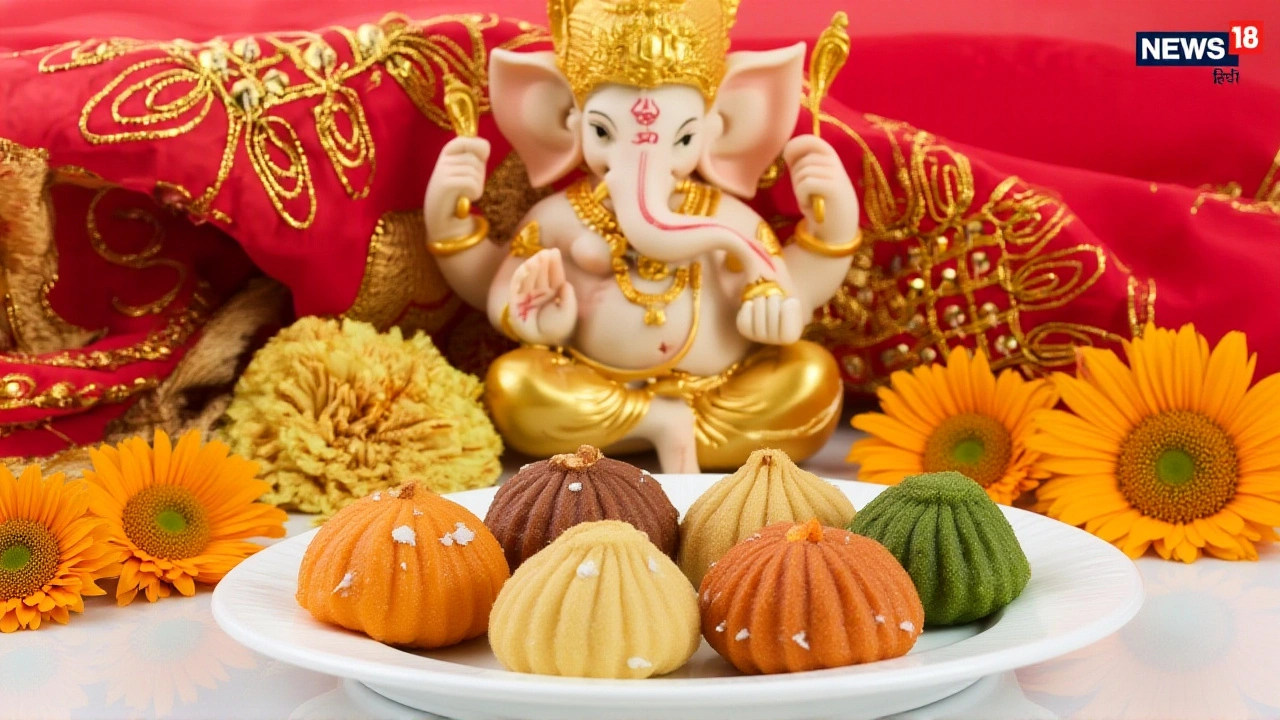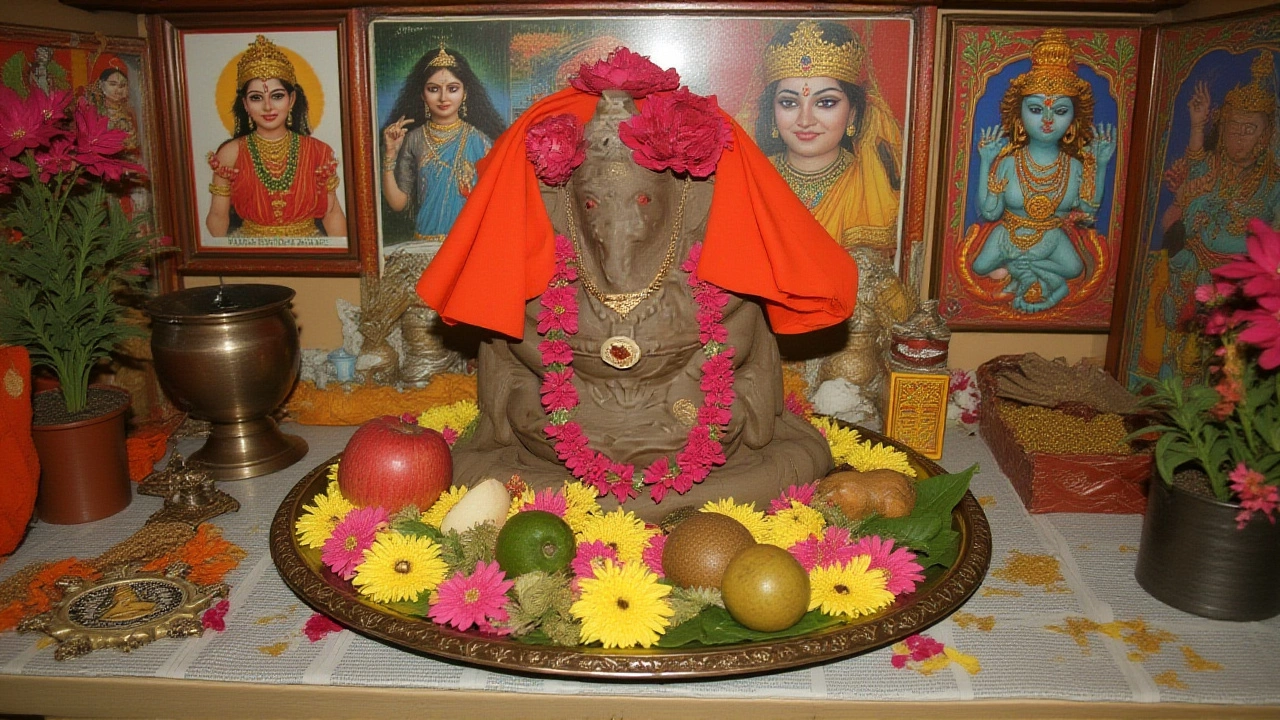When Lord Ganesha makes his yearly debut, the whole subcontinent seems to hold its breath. Ganesh Chaturthi 2025 kicks off on Wednesday, August 27, 2025, according to the Hindu lunisolar calendar, and wraps up with a spectacular immersion on Saturday, September 6, 2025. Devotees across Maharashtra and the rest of India will install idols in homes, offices and towering public pandals, while chanting the familiar refrain “Ganpati Bappa Morya.” The excitement isn’t just about fireworks; it’s about invoking the elephant‑headed god who removes obstacles and blesses new beginnings.
When and How the Festival Unfolds in 2025
The ten‑day celebration follows the Shukla Paksha Chaturthi tithi of Bhadrapada. Day 1 lands on August 27, when families clean their spaces, draw rangoli designs, and place a freshly crafted mud or plaster murti on a decorated altar. The next nine days are a blur of aarti, modak offerings, and communal singing. The climax arrives on Ananta Chaturdashi – the 14th day of the same lunar fortnight – when the idols are carried to rivers, seas or lakes for visarjan. In Mumbai alone, roughly 150,000 idols are immersed, according to government estimates.
Here’s the thing: the festival isn’t just a religious rite; it’s also a massive logistical operation. The Times of India reported that city councils deploy extra sanitation crews, and local NGOs set up temporary waste‑processing units to handle the surge in plastic and floral waste.
The Sacred Angarki Chaturthi Fast
On Tuesday, August 12, 2025, the calendar marks Angarki Chaturthi 2025India. ‘Angarki’ stems from Angaraka, the Sanskrit name for Mars, and when the auspicious Chaturthi aligns with a Tuesday, believers say the spiritual potency spikes. Devotees begin the day with a ritual bath, then perform a puja that includes durva grass, red hibiscus, and, of course, a heap of sweet modaks. Some keep a complete fast – only fruits, milk and water – while others opt for a half‑fast, avoiding grains but eating light vegetables.
According to a local priest quoted by Rishabh Agrover, “When Angarki Chaturthi coincides with a Tuesday, the energies of Mars sharpen our resolve, helping us cut through mental obstacles.” The fast is broken only after sighting the moon, when devotees offer arghya (water) and recite the Ganapati Atharvashirsha.
Mythic Roots: The Ganesh Vrat Katha
Every year, families retell the Vrat Katha – the story that explains why Ganesha is worshipped first. According to the Rudraksha Ratna article, Goddess Parvati fashioned Ganesha from sandalwood paste while she bathed. She set the young boy at the door, unaware that the returning Shiva would be denied entry. In a flash of anger, Shiva sliced off Ganesha’s head with his trident. Parvati’s grief demanded a remedy; Shiva instructed his followers to fetch the first creature they found facing north – an elephant – whose head was then affixed to Ganesha’s body. The deity, revived, received a boon: he would be honored first in any ceremony. This myth underscores the festival’s central theme – removing obstacles before embarking on any new venture.
The twist is that the story also legitimizes the ritual of placing a newly crafted idol before any other deity in the household, a practice observed by millions each year.

Celebrations Across India: From Mumbai Streets to Kanipakam Temples
While Mumbai and Pune host towering pandals, the celebration spreads far beyond Maharashtra. In Kanipakam, Andhra Pradesh, the Varasidhi Vinayaka Swamy Temple will launch a 21‑day brahmotsavam starting on the main Chaturthi day. The deity is taken on procession atop various vahanams – mouse, lion, and peacock – drawing pilgrims from Telangana, Karnataka and beyond.
Over in Kurukshetra, the ISKCON centre has announced a ten‑day cultural program featuring classical dance, bhakti‑singar, and discourses on the philosophical aspects of Ganesha worship. “The festival offers a complete rotation of spiritual cleansing,” said ISKCON Kurukshetra’s head priest, “allowing devotees to elevate consciousness day by day.”
What the Rituals Mean for Devotees Today
The daily aarti, the rhythmic chanting of the Ganapati Atharvashirsha, and the communal sharing of modaks are more than tradition; they’re psychological resets. A 2023 survey by the Indian Institute of Psychology found that 68% of respondents felt a “renewed sense of purpose” after participating in the ten‑day observance.
- Key dates: Angarki Chaturthi – August 12, 2025; Ganesh Chaturthi – August 27 to September 6, 2025.
- Typical fast: fruits, water, milk (full) or light veg (half).
- Offerings: durva grass, red hibiscus, modaks, incense.
- Immersion: 150,000+ idols in Mumbai, dozens of rivers nationwide.
- Historical origin: public celebration began in 1893, championed by Lokmanya Bal Gangadhar Tilak.
Even as urbanization reshapes Indian cities, the festival remains a unifying thread, stitching together a tapestry of faith, community and cultural pride.

Looking Ahead: What to Expect in 2026
Organizers are already planning greener pandals for next year, promising biodegradable materials and solar‑powered lighting. If the current enthusiasm is any indicator, the celebrations will only grow louder, brighter and more inclusive.
Frequently Asked Questions
When does Ganesh Chaturthi 2025 start and end?
The festival begins on Wednesday, August 27, 2025 and concludes with the main Ganpati Visarjan on Saturday, September 6, 2025, spanning ten days of rituals and celebrations.
What makes Angarki Chaturthi 2025 particularly auspicious?
Angarki Chaturthi falls on Tuesday, August 12, 2025, aligning the Chaturthi tithi with the planet Mars (Angaraka). This coincidence is believed to amplify spiritual potency, making the fast especially powerful for removing obstacles.
How many Ganesha idols are immersed in Mumbai each year?
Approximately 150,000 idols are immersed in Mumbai during Ganesh Chaturthi, according to municipal estimates. The sheer volume underscores the festival’s massive scale in the city.
What are the typical offerings made during the puja?
Devotees usually present durva (grass), red hibiscus (jasmine) flowers, incense, and sweet modaks – said to be Ganesha’s favourite. Lighted lamps and fresh fruit are also common.
Why is Lord Ganesha worshipped first in Hindu rituals?
According to the Ganesh Vrat Katha, after Shiva restored the deity with an elephant’s head, he granted Ganesha the boon that he be invoked first in any ceremony. This tradition symbolizes clearing obstacles before any new undertaking.

